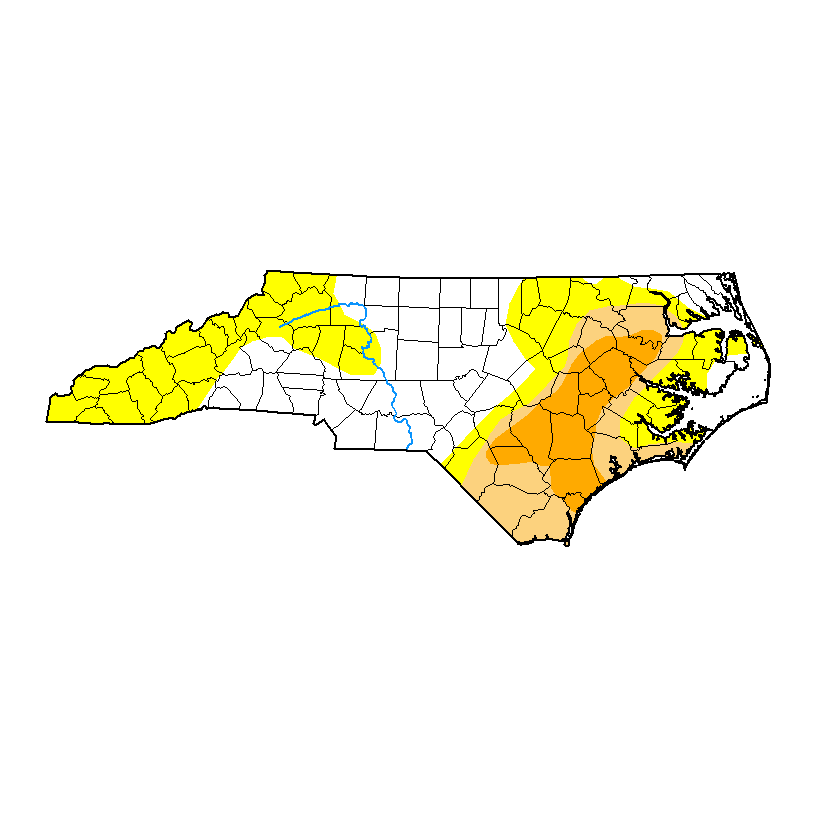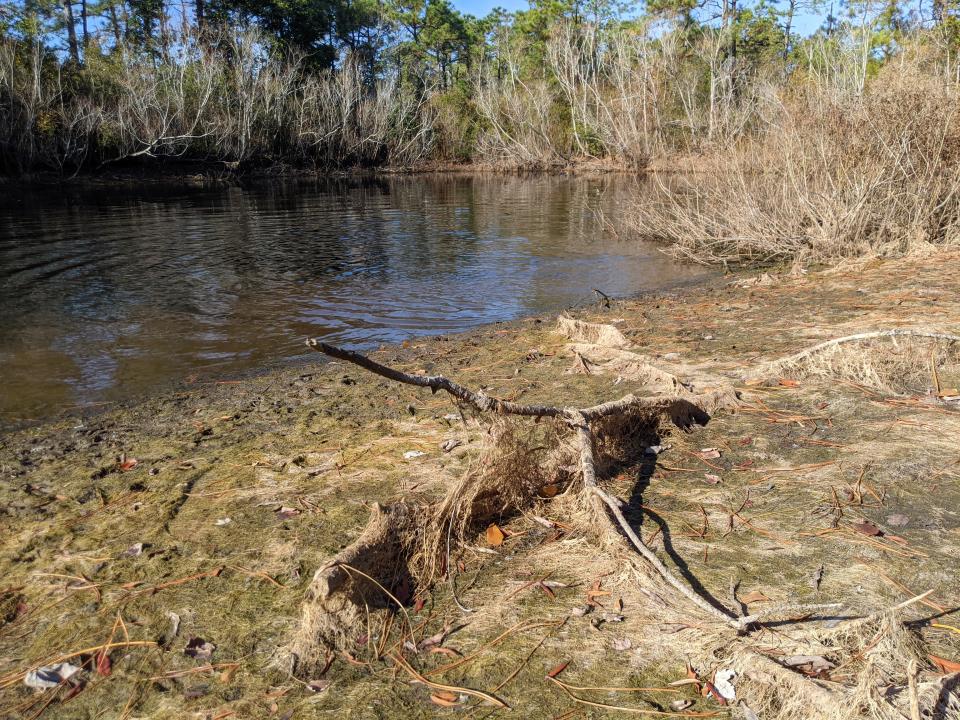Could it take a hurricane to pull Eastern NC out of its stubborn drought?
Even as May thunderstorms play a game of hit-and-miss across the region, Eastern North Carolina remains mired in a seven-month-long dry spell that could take a drought-busting tropical storm or hurricane to really put a dent it in its water deficit.
According to the latest map from the U.S. Drought Monitor, pretty much all of the state east of Interstate 95 is in moderate or severe drought, with the driest areas running from roughly Wilson and Lumberton down to Wilmington. The latest map, released May 19, shows 62% of the state as either "abnormally dry" or in some state of drought. That's up from 49% the week before and 43% three months ago.
Corey Davis, the state's assistant climatologist, said much of North Carolina's coastal plain has been in drought since late October 2021, tying it for the state's fifth longest drought of this century.

But the drought is still a long ways off the state's multi-year droughts that persisted in 2000-02, 2007-09 and 2010-12.
"Each of those lasted 100 weeks or more, so we're not even a third of the way to that sort of longevity yet," Davis said via email.
Growing pains: Will Brunswick County have enough water to keep up with growth?
So far impacts from the drought appear to be limited, with few public water systems even asking for voluntary water restrictions at this time. Those utilities largely rely on deep wells or rivers, like the Cape Fear for many water systems in and around Wilmington, for their water supplies.

But some surface waters, like shallow lakes and creeks, are already seeing the impacts from the continued dry weather. That has some farmers nervous, especially as freshly planted crops look to get established in fields where the soil is lacking moisture.
Dr. Mike Parker, a tree fruit specialist with N.C. State University, said in a perfect world farmers would be able to rely on irrigation systems for a guaranteed water supply for their crops. But that's not realistic, often due to finances, for most farmers in Eastern North Carolina.
"Drought's always a concern for these guys," Parker said.
Another busy hurricane season on tap?
The Wilmington metro area, home to more than 430,000 people, is the largest community currently experiencing drought conditions. According to the latest drought map, much of the region is classified as under "severe drought."
The U.S. National Weather Service's Wilmington office recorded 0.71 inches of rain at the Port City's airport in May through Monday, just 21% of normal monthly levels. For 2022, Wilmington has seen about 12 inches of rain. The normal is 17.7 inches. Davis said Wilmington's precipitation deficit is 7.3 inches over the past six months.
Super Storms: In a warming world, 'Cat 6' hurricanes could soon be coming to a coast near you
So will it take a tropical system, hopefully without dangerous winds, drenching the region to pull the area out of this extended period of dry weather?
"A good soaking from a tropical storm would definitely make a difference in the current drought," Davis said.
Tuesday the National Ocean and Atmospheric Administration (NOAA) released its forecast for the 2022 Atlantic hurricane season. Echoing other prognostications for the upcoming season, federal scientists are predicting "above-average hurricane activity" this year, with up to 21 named storms, of which 6 to 10 could become hurricanes.
It is the seventh consecutive year that NOAA is forecasting above-normal activity. Hurricane season starts June 1, reaches its peak in early September, and ends Nov. 30.
Perhaps indicating the belief that we're headed toward another active hurricane season, the U.S. Drought Monitor said Wilmington's drought conditions are expected to "remain but improve" over the next three months.
Will May heat bring more tropical storms? Officials mull moving start of hurricane season
But a busy hurricane season might not solve all of North Carolina's drought woes, Davis warned.
He said the 2021 hurricane season saw 21 named storms, but only three of those brought significant rainfall to North Carolina — the last being Tropical Storm Fred in mid-August.
"Since most of the storms stayed out at sea last fall, we never saw the rain we rely on from them that time of year, and that's one big reason why drought emerged in the first place," Davis said.
According to climatologists, heavy drenchings mixed with long periods of dry weather is likely to be one of the impacts of our changing climate, which is fueled by man's pumping of greenhouse gases into the atmosphere. And the warmer the planet gets, the more severe the conditions are forecast to come.
Offshore wind:Turning wind into power off the Wilmington coast could be a decade away
Scientists have said immediate and in some cases drastic reductions in worldwide carbon emissions are needed to limit global warming to 1.5 degrees Celsius, or 2.7 degrees Fahrenheit by the end of the century. Any warming beyond that could lead to "cascading and irreversible climate effects," according to United Nations' Secretary General Antonio Guterres.
"Drought sometimes feels like the boring, absence-of-anything-interesting side of our climate, but it's truly becoming the centerpiece of our changing climate and weather whiplash," Davis said.
Reporter Gareth McGrath can be reached at GMcGrath@Gannett.com or @GarethMcGrathSN on Twitter. This story was produced with financial support from 1Earth Fund and the Prentice Foundation. The USA TODAY Network maintains full editorial control of the work.
This article originally appeared on Wilmington StarNews: A hurricane might be needed to pull Eastern NC out of stubborn drought

